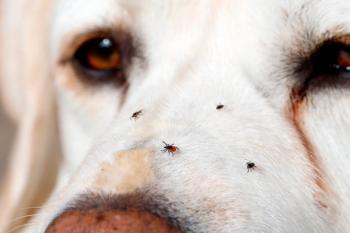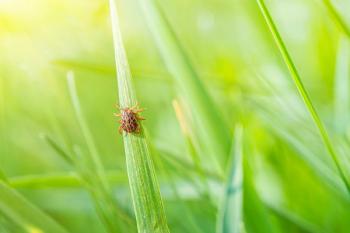
Meningeal worm update (Proceedings)
Meningeal worm or brain worm infection in camelids, elk, moose, and sheep and goats is caused by the roundworm parasite, Parelaphostrongylus tenuis.
Meningeal worm or brain worm infection in camelids, elk, moose, and sheep and goats is caused by the roundworm parasite, Parelaphostrongylus tenuis. Meningeal worm infection is one of the most common causes of neurological illness and death in camelids and treatment of chronic cases are often difficult and expensive. Infected animals present with a head tilt, arching of the neck, incoordination, difficulty getting up, and/or gradual weight loss. The parasite causes disease by migration of the worm through the brain or spinal cord of affected animals leading to internal trauma and inflammation. Currently, no live animal test is available and post-mortem testing is performed by microscopic examination of brain sections for evidence of the worm migration pathways. Aberrant migration of meningeal worm larvae through the neuropil and spinal cord of camelids, especially alpacas and llamas, causes severe clinical neurological disorders. Camelids are exposed to the intermediate larval stages of P. tenuis via the accidental ingestion of infected terrestrial slugs and snails. Many other domesticated species have also been proven to be susceptible to P. tenuis infection including sheep, horses, cattle, and bison. Infected animals present with a head tilt, arching of the neck, incoordination, difficulty getting up, and/or gradual weight loss. Treatment for camelids and ungulates with moderate to severe clinical disease is often expensive, but unrewarding, despite use of numerous anthelmintics and supportive. Parelaphostrongylus tenuis infection also has a huge impact on wildlife conservation.
The natural host of the metastrongylid parasite is the white-tailed deer, Odocoileus viginianus, which are unapparent carriers of the parasite. However, in other species of ungulates, like those listed above, the response to infection is quite different. The larvae emerge from accidentally ingested slugs and snails, and penetrate the host's gastrointestinal track. From there, they migrate to and develop within the spinal cord for up to 1 month. The migrating P. tenuis larvae cause extensive central nervous system (CNS) damage and disabling neurologic disease. Lesions caused by P. tenuis migration are often difficult to identify, due to the fact that their histologic appearance varies so greatly. Currently, there is no commercially available antemortem test to confirm Parelaphostrongylus spp. infection in any species. Suspect cases of P. tenuis is often made in camelids following detection of cerebrospinal fluid (CSF) eosinophilic inflammation, combined with the clinical signs of head tilt, arching of the neck, incoordination, difficulty getting up, and/or gradual weight loss. A nested PCR can be used to detect P. tenuis from formalin fixed tissue which was successfully used for detection of Parelaphostrongylus spp. DNA in a Sika deer, horse, cattle, and guinea pig.
Prevention of parasite infection include minimizing deer populations through hunting, high fences to exclude deer, the use of livestock guardian dogs, and use of rock lined area on the outside of the fence. The use of molluscicides on the outer fence rocks can impede the entry of infected gastropods into pastures and minimize infection of P. tenuis into camelids and other animals. The use of injectable ivermectin has been used to prevent infection in P. tenuis infection; however, unintentional side effects could be selection of ivermectin-resistant Haemonchus contortus and other gastrointestinal nematodes.
Newsletter
From exam room tips to practice management insights, get trusted veterinary news delivered straight to your inbox—subscribe to dvm360.






